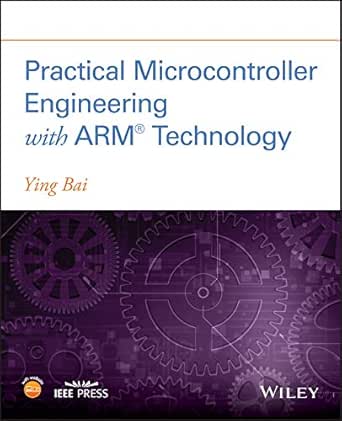Practical Microcontroller Engineering with ARM Technology: Integrating IoT, Embedded Linux, RTOS, QEMU, and SystemC-TLM
Abstract
ARM Cortex-M microcontrollers are central to modern embedded engineering due to their balance of performance, power efficiency, and rich peripheral support. With the rise of IoT ecosystems, these microcontrollers increasingly interface with Embedded Linux systems, real-time operating systems (RTOS), virtual prototyping tools like QEMU, and system-level design frameworks such as SystemC-TLM.
This white paper explores practical engineering methods for designing, programming, and deploying ARM microcontroller solutions. It also highlights how IAS-Research.com provides specialized support through consultation, system integration, and research collaboration to accelerate innovation in industrial, academic, and scientific applications.
Introduction and Scope
Embedded systems powered by ARM Cortex-M microcontrollers are widely deployed in industrial automation, IoT edge computing, and scientific instrumentation. The increasing demand for scalable, connected, and real-time solutions requires integration with higher-level operating systems (Embedded Linux), robust RTOS-based scheduling, and advanced modeling tools for system validation.
This paper addresses:
- Microcontroller Architecture and development workflows.
- IoT and Edge Integration using ARM platforms.
- Embedded Linux and interoperability with microcontrollers.
- RTOS deployment for real-time tasks.
- QEMU and SystemC-TLM for simulation, co-design, and performance validation.
Fundamentals of ARM Cortex-M Microcontroller Architecture
- RISC-based ISA: Lightweight, efficient, and deterministic execution [5].
- Performance Tiers: Cortex-M0/M3/M4/M7 for different power/performance trade-offs.
- Integrated Peripherals: GPIO, ADC, DAC, SPI, I2C, CAN, Ethernet, and USB.
- Determinism for Control Applications: Interrupt-driven NVIC system ensures real-time responsiveness.
IoT and Embedded Integration
IoT applications require low-power microcontrollers with cloud connectivity and local intelligence.
- Edge Computing: Cortex-M microcontrollers process sensor data before forwarding to cloud servers.
- Protocols: MQTT, CoAP, and LoRaWAN stacks implemented on ARM-based devices.
- Embedded Linux Gateways: Many IoT solutions pair ARM Cortex-M devices with higher-end ARM Cortex-A processors running Embedded Linux (Yocto, Buildroot, or Debian variants). The microcontrollers handle real-time data acquisition, while Linux nodes manage networking, security, and containerized applications.
Real-Time Operating Systems (RTOS) in ARM Applications
- RTOS Benefits: Deterministic scheduling, inter-task communication, and resource sharing.
- Popular Choices: FreeRTOS, Zephyr, and RTX.
- Use Case: An industrial control system where Cortex-M runs FreeRTOS to guarantee motor control loop timing, while a companion Linux system manages cloud telemetry.
Virtual Prototyping with QEMU
- QEMU for ARM: Enables full-system emulation of Cortex-M and Cortex-A devices.
- Benefits: Early firmware testing, debugging, and CI/CD pipeline integration without physical hardware.
- Practical Use Case: Validate an IoT sensor node firmware on QEMU before deploying on STM32 hardware.
SystemC-TLM for System-Level Modeling
- SystemC-TLM (Transaction-Level Modeling): Supports hardware/software co-design and early architecture exploration.
- Benefits for ARM Development:
- Enables fast simulation of communication buses and processing units.
- Provides a framework for evaluating performance trade-offs before committing to hardware.
- Use Case: Model a multi-node IoT system with multiple Cortex-M cores exchanging data over SPI/I2C, validated against real-time requirements.
Case Studies
- Industrial IoT Monitoring: ARM Cortex-M4 with FreeRTOS for sensor acquisition; data aggregation by Embedded Linux gateway; validated using QEMU and SystemC-TLM co-simulation.
- Smart Energy Systems: Cortex-M7 microcontrollers managing power electronics with deterministic RTOS scheduling; high-level optimization on ARM Linux boards.
- Scientific Instrumentation: Cortex-M0+ for data capture; Cortex-A running Linux for storage, cloud API integration, and visualization.
How IAS-Research.com Can Help
- Technical Consulting: Selecting appropriate ARM architectures, RTOS integration, and IoT frameworks.
- Embedded Linux Support: Expertise in Yocto, Buildroot, and kernel customization for microcontroller-to-Linux interoperability.
- Virtual Prototyping & Modeling: QEMU setup, SystemC-TLM co-design, and simulation frameworks to reduce hardware risks.
- Custom Application Development: Tailored drivers, RTOS task management, and real-time data pipelines.
- Research Collaboration: Joint development of IoT edge platforms, digital twins, and advanced embedded Linux ecosystems.
- Documentation & White Paper Support: Creating technical reports, proof-of-concept papers, and training materials for academic and industrial clients.
Practical Steps for Implementation
- Select Platform: Choose ARM Cortex-M or hybrid ARM Linux + Cortex-M architecture based on IoT and RTOS needs.
- Prototype Virtually: Use QEMU and SystemC-TLM for rapid prototyping and validation.
- Develop Firmware & Software: Follow MISRA-C/C++ coding guidelines; integrate FreeRTOS or Zephyr as needed.
- Deploy IoT Stack: Connect Cortex-M to Embedded Linux gateway, implement communication protocols, and integrate cloud APIs.
- Collaborate with IAS-Research.com: For debugging, optimization, and research-driven system improvements.
Conclusion
The integration of ARM Cortex-M microcontrollers with IoT, Embedded Linux, RTOS, QEMU, and SystemC-TLM unlocks powerful possibilities for scalable, connected, and real-time embedded systems.
By partnering with IAS-Research.com, organizations gain access to expert consulting, system co-design, and advanced simulation methodologies — reducing risks, accelerating time-to-market, and enabling innovative applications in industrial automation, scientific research, and next-generation IoT ecosystems.



